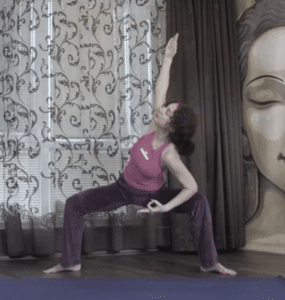Anyone whose job requires intelligence and creativity knows
that quick and practical thinking is the key to success. However, it is difficult to always be first, no matter how talented and gifted you are. Even if you have the mind of Einstein, sometimes you feel incompetent.
Mr. Creative Thinking himself, Steve Jobs often felt the need to "kick" his mind.
Here are a few mental gymnastics techniques that Jobs himself shared with his biographer, Walter Isaacson:
"If you just sit and observe, you will see how restless your mind is.
If you try to calm it down, it gets worse, but in time it calms down and when it quiets down, you can hear subtler things - that's when your intuition starts to blossom, you start to see more clearly and be present more in the Present”.
Jobs reveals his method of meditation and shares that he has used this mental practice for many years.
A specific technique called mindful meditation comes from Zen Buddhism and Taoism.
One of the people who knows a lot about Steve's spiritual odyssey is the well-known author and journalist Jeffrey James. He recalls talking to him about the matter in the early 1990s, discussing the similarities between Zen and computer programming.
"In those days, such a thing was quite unusual and exotic - says James - Even in this sense, Jobs was ahead of his time".
Things have certainly changed since then.
Today, the beneficial effects of the meditation are recognized by leading specialists in the field of neuroscience. Corporate giants like Google, General Mills, Target and Ford are training their employees to practice the same meditative practices that Jobs discovered for himself decades ago. You can view a collection of guided meditations in Bulgarian here: www.milenagoleva.com
Studying the quotes in Isaacson's books, James concluded that Jobs' meditative techniques were very similar to those he himself had once learned from an outstanding martial artist, Yang Junming.
The following is the essence of his technique in six steps:
step 1
Sit cross-legged in a quiet and peaceful place. Use a flat pillow to reduce strain on your spine. Start taking deep breaths. Read more: A bedtime ritual for health and restful sleep
Step 2
Close your eyes and try to concentrate on the internal monologue in your mind, on the thoughts that keep bouncing around in your head. Thoughts about work, things you've watched on TV, all the daily jingles of your restless 'monkey mind'. Don't try to make him stop, at least not yet. Just watch him jump from one topic to another. Do this exercise for five minutes a day for a week.
Step 3
Without still trying to calm the maelstrom of thoughts, try to shift your attention to the so-called "ox mind" - that part of consciousness that is responsible for calm and unhurried thinking. The "ox mind" simply observes the world around it. He doesn't judge, he doesn't look for meaning - he just looks, listens and feels. Most people are not even aware of its existence, although it can reveal itself in moments of great shock when the "monkey mind" goes silent. But even when we remain under the full influence of the "monkey mind", constantly bombarded by its orders, the "ox mind" does its quiet, ceaseless work.
Step 4
As you gradually come into contact with your "ox mind," try asking it to slow down the activity of your "monkey mind." Jeffrey James, for example, uses the following method:
Imagine your "inner ox" walking slowly down a country road. This mental picture should help you calm the "inner monkey". Don't expect him to fall asleep overnight. Monkeys are restless by nature. And yet you will soon notice that she becomes calmer and creates less fuss.
Step 5
Once you have silenced the "monkey mind", focus your attention on your "ox mind".
If you did everything right, you will feel your breathing slow down. You will suddenly feel the air around you touching your skin. You may even feel the blood pulsing in your veins. When you open your eyes, the world will seem indescribably changed, renewed and even somewhat strange. For example, you might think of a window simply as a rectangle filled with light. Something that does not need to be opened or closed, cleaned and repaired. Something that simply exists - here and now. And what's more, you will perceive yourself in a new way - as existing Here and Now!
Step 6
It will take some time to reach this state. But when you finally succeed, you'll find that you no longer notice the minutes that pass from the moment you start the timer to the moment you hit the stop button. Gradually, day by day, increase the duration of the meditations. Incredibly, no matter how long the meditations go on, once you reach higher levels of awareness, you will not feel time passing.
Regular practice of mindful meditation gives you three important benefits:
1. You will be relieved of stress.
Life's difficulties will no longer have the power to upset your balance. Read also: Meditation is a charger for the mind
2. Insomnia will be a thing of the past.
As Jeffrey James testifies, thanks to regular meditation, he only needs two or three seconds to fall asleep.
3. You will gain the ability to think more clearly
and see the true value of things in life.
You can find the author's collection of guided meditations by Milena Goleva here: www.milenagoleva.com









